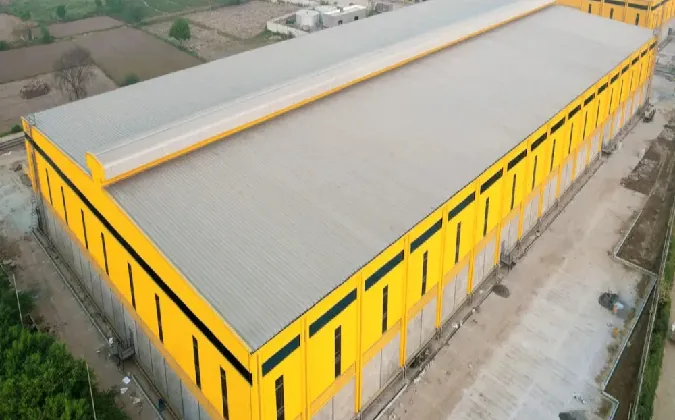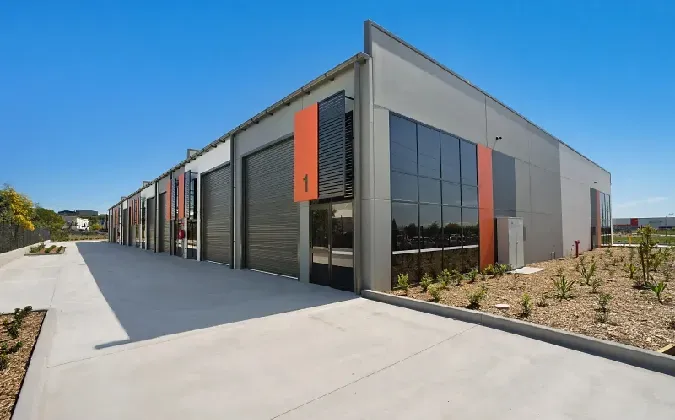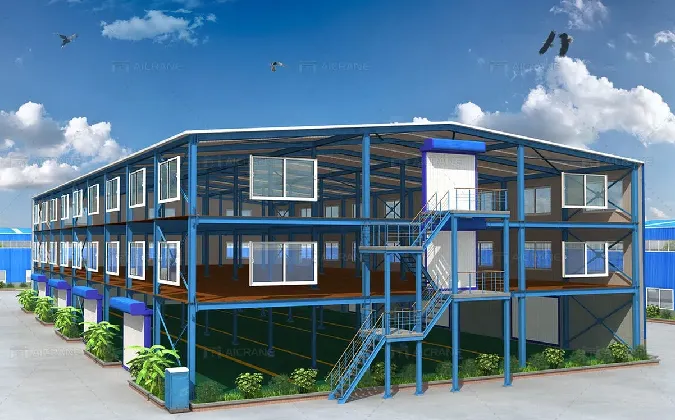- Afrikaans
- Albanian
- Amharic
- Arabic
- Armenian
- Azerbaijani
- Basque
- Belarusian
- Bengali
- Bosnian
- Bulgarian
- Catalan
- Cebuano
- Corsican
- Croatian
- Czech
- Danish
- Dutch
- English
- Esperanto
- Estonian
- Finnish
- French
- Frisian
- Galician
- Georgian
- German
- Greek
- Gujarati
- Haitian Creole
- hausa
- hawaiian
- Hebrew
- Hindi
- Miao
- Hungarian
- Icelandic
- igbo
- Indonesian
- irish
- Italian
- Japanese
- Javanese
- Kannada
- kazakh
- Khmer
- Rwandese
- Korean
- Kurdish
- Kyrgyz
- Lao
- Latin
- Latvian
- Lithuanian
- Luxembourgish
- Macedonian
- Malgashi
- Malay
- Malayalam
- Maltese
- Maori
- Marathi
- Mongolian
- Myanmar
- Nepali
- Norwegian
- Norwegian
- Occitan
- Pashto
- Persian
- Polish
- Portuguese
- Punjabi
- Romanian
- Russian
- Samoan
- Scottish Gaelic
- Serbian
- Sesotho
- Shona
- Sindhi
- Sinhala
- Slovak
- Slovenian
- Somali
- Spanish
- Sundanese
- Swahili
- Swedish
- Tagalog
- Tajik
- Tamil
- Tatar
- Telugu
- Thai
- Turkish
- Turkmen
- Ukrainian
- Urdu
- Uighur
- Uzbek
- Vietnamese
- Welsh
- Bantu
- Yiddish
- Yoruba
- Zulu
8月 . 07, 2025 04:40 Back to list
The Transformative Power of Prefabricated Steel Warehouse Building Solutions
In today's rapidly evolving industrial landscape, the demand for efficient, durable, and rapidly deployable storage and operational spaces is at an all-time high. Traditional construction methods often fall short in meeting these contemporary requirements, particularly concerning speed, cost-effectiveness, and adaptability. This is where the Prefabricated Steel Warehouse Building emerges as a game-changer. These structures represent a paradigm shift in construction, offering unparalleled advantages for businesses across diverse sectors. They are not merely buildings but sophisticated engineered solutions designed for optimal performance and longevity.
Understanding Industry Trends and Market Dynamics
The global market for pre-engineered buildings, including **Prefabricated Steel Warehouse Building** structures, is experiencing robust growth. According to a report by Grand View Research, the global pre-engineered building market size was valued at USD 24.34 billion in 2022 and is expected to expand at a compound annual growth rate (CAGR) of 13.0% from 2023 to 2030. This growth is driven by increasing industrialization, rising infrastructure development, and a growing emphasis on sustainable and cost-effective construction methods.
Key trends shaping this industry include:
- Sustainability: Steel is a highly recyclable material, making **Prefabricated Steel Warehouse Building** solutions an eco-friendly choice. Manufacturers are increasingly adopting green building practices and materials.
- Digitalization: The integration of Building Information Modeling (BIM) and advanced CAD software streamlines design, fabrication, and construction processes, enhancing precision and reducing waste.
- Modular Construction: The inherent modularity of steel structures allows for easier expansion, modification, and even relocation, providing businesses with unmatched flexibility.
- Speed of Deployment: The ability to erect a large-scale **Prefabricated Steel Warehouse Building** in a fraction of the time compared to conventional methods is a significant driver, enabling businesses to commence operations faster.
As businesses seek to optimize their supply chains and operational efficiency, the adoption of **Prefabricated Steel Warehouse Building** solutions is set to accelerate, becoming an indispensable asset for modern industrial and commercial enterprises.
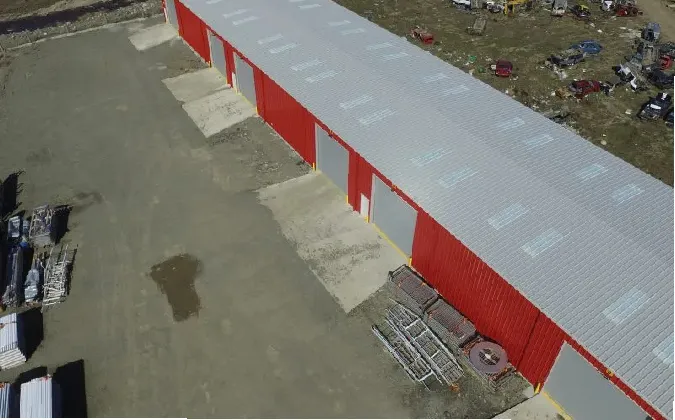
Deep Dive into Product Specifications and Technical Parameters
A Prefabricated Steel Warehouse Building is a meticulously engineered structure, designed for optimal strength, durability, and functionality. Understanding its core components and technical specifications is crucial for appreciating its value.
Core Structural Components and Materials
The strength and longevity of a **Prefabricated Steel Warehouse Building** primarily depend on the quality of its materials and the precision of its design. Key components typically include:
- Main Steel Frame: This consists of H-section columns and beams made from high-strength structural steel, commonly Q235B or Q345B. Q345B steel, for instance, offers a yield strength of 345 MPa, significantly higher than Q235B (235 MPa), making it suitable for larger spans and heavier loads. These frames are designed according to international standards such as ASTM A36/A572 Gr.50 or EN S235/S355.
- Secondary Steel Components: Purlins (C or Z section) and girts provide support for roofing and wall cladding. These are typically made from galvanized light gauge steel.
- Roofing and Wall Panels: Options range from single-skin corrugated steel sheets to insulated sandwich panels (EPS, PU, Rock Wool, or Glass Wool) for enhanced thermal performance. Panel thicknesses vary from 50mm to 150mm depending on insulation requirements and local climate conditions.
- Bracing Systems: X-bracing or rod bracing systems made of round steel bars or angles are integrated to provide lateral stability against wind and seismic forces.
- Fasteners: High-strength bolts (e.g., Grade 8.8, 10.9) are used for main connections, ensuring structural integrity.
Typical Prefabricated Steel Warehouse Building Parameters
The versatility of **Prefabricated Steel Warehouse Building** designs allows for a wide range of specifications to meet diverse operational needs. Here’s a table outlining typical parameters:
| Parameter | Typical Range/Specification | Explanation/Notes |
|---|---|---|
| Structure Type | Light Steel Structure, Heavy Steel Structure | Based on load requirements and span. Heavy structures are for multi-story or crane-intensive applications. |
| Main Steel Material | Q235B, Q345B (China Std.); ASTM A36, A572 Gr.50 (US Std.); EN S235, S355 (EU Std.) | High-strength structural steel, selected based on load-bearing calculations and regional standards. |
| Steel Surface Treatment | Hot-dip Galvanizing (HDG), Primer + Topcoat Painting (Epoxy, Alkyd) | HDG (min. 65-85 microns) for superior corrosion resistance, painting (min. 80-120 microns DFT) for aesthetics and protection. |
| Roofing Material | Single Corrugated Steel Sheet, EPS/PU/Rock Wool/Glass Wool Sandwich Panel | Single layer for basic cover, sandwich panels for thermal insulation and soundproofing. Thicknesses vary (0.5-0.8mm for sheets, 50-150mm for panels). |
| Wall Material | Single Corrugated Steel Sheet, EPS/PU/Rock Wool/Glass Wool Sandwich Panel | Similar to roofing, chosen for aesthetics, insulation, and fire resistance (Rock Wool panels have excellent fire ratings). |
| Wind Load Resistance | 0.3 – 1.0 KN/m² (up to 200 km/h) | Designed to withstand specific local wind speeds as per building codes (e.g., ASCE 7-16, Eurocode 1). |
| Snow Load Resistance | 0.3 – 0.8 KN/m² | Designed for local snow loads, critical in cold climates. |
| Seismic Resistance | Up to 9 Magnitude (Richter Scale) | Engineered to resist seismic forces based on the building's location and seismic zone requirements. |
| Lifespan | 50+ Years | With proper maintenance and material selection (e.g., hot-dip galvanized steel). |
| Insulation R-Value | R-13 to R-30+ (for sandwich panels) | Indicates thermal resistance, higher values mean better insulation and energy efficiency. |
| Fire Resistance Rating | Up to 4 hours (for specific wall/roof systems) | Achieved with fire-rated materials like Rock Wool sandwich panels. |
Manufacturing Process Explained: From Concept to Completion
The manufacturing of a Prefabricated Steel Warehouse Building is a highly systematic and controlled process, ensuring precision and quality at every stage. This streamlined approach is a key differentiator from traditional construction. While a detailed visual diagram or short video link (e.g., `[Insert Placeholder for Manufacturing Process Video Link]`) would best illustrate this, here's a step-by-step breakdown:
- Design & Engineering (Conceptualization & Blueprints):
- Initial Consultation & Requirements Gathering: Understanding client needs, site conditions, load requirements (wind, snow, seismic), and local building codes.
- Structural Design & Analysis: Utilizing advanced software like SAP2000, ETABS, Tekla Structures, and AutoCAD to create detailed structural drawings and perform finite element analysis. This includes optimizing steel usage and ensuring structural integrity.
- Detailed Fabrication Drawings: Generating precise drawings for every component, specifying dimensions, welding details, and assembly instructions.
- Material Preparation (Sourcing & Cutting):
- Steel Procurement: Sourcing high-quality structural steel plates, beams, and channels (e.g., Q345B, ASTM A572 Gr.50) from certified suppliers.
- Cutting: Using CNC (Computer Numerical Control) plasma or flame cutting machines to precisely cut steel plates into desired shapes for columns, beams, and connection plates. This ensures minimal material waste and high accuracy.
- Drilling: Automated drilling machines create bolt holes with extreme precision, crucial for accurate on-site assembly.
- Fabrication (Assembly & Welding):
- Component Assembly: Individual steel components are laid out and assembled according to fabrication drawings.
- Welding: Highly skilled welders perform arc welding or submerged arc welding (SAW) to join components. All welding procedures adhere strictly to international standards such as AWS D1.1 (Structural Welding Code – Steel) or ISO 3834, ensuring strong and durable connections. Non-destructive testing (NDT) methods like ultrasonic testing (UT) or magnetic particle inspection (MPI) are regularly performed on critical welds to detect any defects.
- End Plate Welding: Attaching end plates to beams and columns for bolted connections on site.
- Surface Treatment (Protection & Aesthetics):
- Shot Blasting: Steel components undergo shot blasting (SA 2.5 grade) to remove rust, mill scale, and other impurities, creating a clean surface for coating adhesion.
- Painting: Application of primer and topcoat systems (e.g., zinc-rich epoxy primer followed by polyurethane topcoat). The dry film thickness (DFT) is carefully monitored to ensure long-term corrosion protection. Hot-dip galvanizing (HDG) is an alternative and superior corrosion protection method, especially for coastal or corrosive environments, providing a zinc coating typically 65-85 microns thick.
- Pre-Assembly & Quality Control (Verification & Inspection):
- Trial Assembly (Optional but Recommended): For complex structures, a trial assembly in the factory ensures all components fit perfectly before shipping, minimizing on-site issues.
- Quality Inspection: Throughout the entire process, rigorous quality control checks are performed. This includes dimensional checks, welding quality inspections, coating thickness measurements, and material verification against standards like ISO 9001 for quality management systems and ANSI/AISC 360 for structural steel buildings.
- Packaging & Logistics (Preparation for Shipment):
- Marking & Bundling: Each fabricated component is clearly marked with its designation number, and components are bundled for efficient shipping.
- Protection: Components are protected against damage during transit.
- Shipping: Components are loaded onto trucks or container111s for transport to the construction site.
This systematic approach not only ensures high quality and precision but also significantly reduces on-site labor and construction time, a major advantage of the Prefabricated Steel Warehouse Building.

Unpacking the Advantages and Applications
The inherent design and manufacturing process of a Prefabricated Steel Warehouse Building endow it with a myriad of advantages that make it superior to traditional construction in many scenarios.
Technical Advantages of Prefabricated Steel Warehouse Building
- Speed of Construction: Components are manufactured off-site simultaneously with site preparation, drastically reducing overall project timelines. A typical **Prefabricated Steel Warehouse Building** can be erected in weeks, compared to months for conventional structures. This translates to faster operational readiness and quicker return on investment.
- Cost-Effectiveness: Reduced construction time, lower labor costs due to pre-fabrication, minimal material waste, and predictable pricing contribute to significant cost savings. Furthermore, steel's long lifespan reduces future maintenance expenses.
- Durability and Longevity: Steel is incredibly strong, resistant to pests, rot, and fire (when properly treated). With appropriate anti-corrosion treatments like hot-dip galvanizing or high-quality paint systems, a **Prefabricated Steel Warehouse Building** can have a service life exceeding 50 years, even in harsh industrial environments.
- Design Flexibility and Expandability: Steel allows for large clear spans without internal columns, maximizing usable space. Designs can be easily customized for various layouts, roof types, and aesthetic preferences. Moreover, steel structures are inherently modular, making future expansions or modifications straightforward and cost-effective.
- Sustainability: Steel is 100% recyclable, making it an environmentally responsible choice. The off-site fabrication process also leads to less on-site waste and reduced carbon footprint. Many **Prefabricated Steel Warehouse Building** designs also incorporate features for energy efficiency, such as insulated panels and natural ventilation systems, reducing operational costs.
- Seismic Resistance: Steel possesses excellent ductility and strength-to-weight ratio, allowing it to perform exceptionally well under seismic activity. A properly designed **Prefabricated Steel Warehouse Building** can withstand significant earthquakes, providing superior safety compared to rigid, brittle structures.
- Corrosion Resistance: Through advanced surface treatments (e.g., hot-dip galvanizing, specialized paint coatings), these buildings offer robust protection against corrosion, crucial for industrial applications where chemicals or moisture are present. This enhances the building's lifespan and reduces maintenance.
Diverse Application Scenarios
The versatility and inherent advantages of **Prefabricated Steel Warehouse Building** solutions make them ideal for a vast array of industries and applications:
- Logistics and Distribution Hubs: Rapid construction and large clear spans make them perfect for storing goods, managing inventory, and facilitating efficient shipping and receiving operations. The ability to integrate crane systems (e.g., overhead bridge cranes up to 50 tons) is a significant advantage for heavy logistics.
- Industrial Production Facilities: From light manufacturing to heavy industrial workshops, these buildings can accommodate machinery, production lines, and specialized environments. Their robust construction supports heavy loads and vibrations. Applicable industries include automotive, electronics, and general manufacturing.
- Agricultural Storage: Ideal for grain storage, livestock shelters, equipment sheds, and produce processing facilities. The durability and resistance to pests and weather are highly beneficial.
- Commercial Retail Spaces: For large format retail stores, showrooms, or even temporary retail setups, offering expansive, flexible interiors.
- Energy Sector Projects: Used for equipment shelters, storage for renewables (solar panels, wind turbine components), power plant ancillary buildings, and even temporary housing for project sites. In the petrochemical industry, their non-combustible nature (steel does not fuel fires) and resistance to corrosive environments are critical.
- Water Treatment & Wastewater Facilities: Covering filtration plants, pump stations, and storage for chemicals. The corrosion resistance is particularly beneficial in these humid and chemically active environments.
- Mining and Metallurgy: Housing for heavy machinery, workshops, and material storage, where durability and resistance to harsh conditions are paramount.
In all these scenarios, the **Prefabricated Steel Warehouse Building** offers benefits like energy efficiency (especially with insulated panels reducing HVAC costs), excellent anti-corrosion properties (extending life in challenging environments), and rapid deployment, ensuring businesses can adapt quickly to market demands.
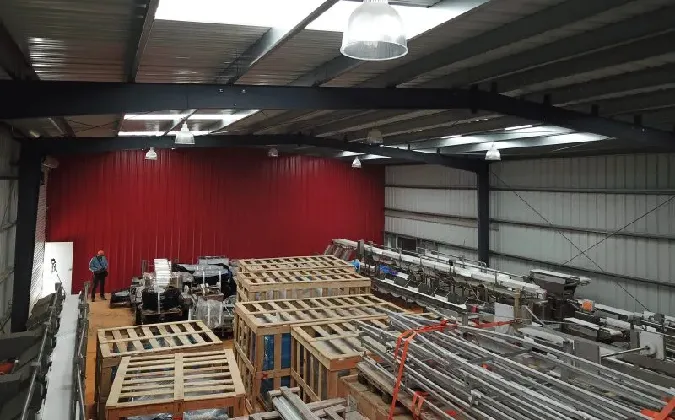
Choosing Your Partner: Manufacturer Comparison and Custom Solutions
Selecting the right manufacturer for your Prefabricated Steel Warehouse Building is a critical decision that impacts project success, longevity, and overall return on investment. It's not just about cost; it's about expertise, quality, and support.
Key Considerations When Selecting a Manufacturer
To ensure you partner with a reputable and capable provider, consider the following aspects:
- Expertise & Experience: Look for manufacturers with a long track record (e.g., 10+ years in the industry) and a diverse portfolio of successful **Prefabricated Steel Warehouse Building** projects, especially those similar to your needs. Their engineering teams should possess deep knowledge of structural integrity, local building codes, and material science.
- Quality Certifications: Verify that the manufacturer adheres to international quality management standards like ISO 9001. Additional certifications (e.g., CE marking for Europe, AWS for welding, ASTM for materials) demonstrate a commitment to excellence and compliance.
- Design Capabilities: A good manufacturer will offer robust in-house design and engineering services, capable of providing detailed 3D models (BIM), structural calculations, and custom designs that meet your specific operational requirements and local regulations.
- Manufacturing Facilities & Technology: Assess their production capabilities. Modern, well-equipped factories with advanced CNC machinery, automated welding lines, and efficient surface treatment processes indicate higher quality and faster production times.
- Project Management & Installation Support: A comprehensive service includes not just fabrication but also logistics, clear project timelines, installation guidance, and potentially on-site supervision.
- After-Sales Support & Warranty: Understand their warranty terms for materials and structure, and their commitment to long-term client support for maintenance or future modifications.
Manufacturer Comparison: A General Overview
While specific company names are beyond the scope, a generic comparison highlights key areas to evaluate:
| Feature/Criteria | Manufacturer A (High-Tier) | Manufacturer B (Mid-Tier) | Manufacturer C (Cost-Focused) |
|---|---|---|---|
| Years in Business | 20+ Years | 10-15 Years | 5-10 Years |
| Certifications | ISO 9001, CE, AWS, AISC | ISO 9001 | Basic Compliance |
| Design & Engineering | Full in-house, BIM, advanced analysis | In-house with some external consultation | Standard designs, limited customization |
| Fabrication Quality | Automated lines, rigorous QC, NDT | Semi-automated, standard QC | Manual processes, basic QC |
| Material Grades | Premium & certified (Q345B, A572) | Standard (Q235B, A36) | Economy grades |
| Surface Treatment | Hot-dip galvanizing, multi-layer paint | Standard painting systems | Basic primer only |
| Project Management | Dedicated PM, comprehensive support | Standard PM, some support | Limited guidance |
| Warranty | 25-50 years structural | 10-20 years structural | Limited (e.g., 5 years) |
| Price Point | Higher | Medium | Lower |
Tailored Prefabricated Steel Warehouse Building Solutions
One of the significant advantages of **Prefabricated Steel Warehouse Building** construction is the high degree of customization possible. A reputable manufacturer should be able to provide bespoke solutions to meet your precise requirements:
- Size and Layout: From small storage units to vast logistics complexes spanning tens of thousands of square meters, designs can be scaled and configured to optimize space utilization. Clear span capabilities allow for maximum usable floor area.
- Roofing and Wall Systems: Choice of single-skin sheets for economy, or various sandwich panels (EPS, PU, Rock Wool, Glass Wool) for thermal insulation, acoustic performance, and fire resistance. Facade options can be customized for aesthetic appeal.
- Integration of Ancillary Systems:
- Ventilation and HVAC: Natural ventilation systems (louvers, roof vents) or integrated HVAC systems for climate control.
- Lighting: Skylights for natural light, energy-efficient LED lighting systems.
- Overhead Crane Systems: Design incorporates reinforced structures to support single or double girder overhead cranes (up to 50+ tons capacity), crucial for heavy industrial applications.
- Doors and Windows: Custom design and placement of rolling doors, sliding doors, personnel doors, and windows for access and natural light.
- Mezzanine Floors: Multi-level designs for office spaces, additional storage, or light manufacturing areas.
- Fire Suppression: Integration of sprinkler systems and fire-rated partitioning.
- Specialized Finishes: Options for specific anti-corrosion coatings for harsh environments (e.g., chemical storage), or specific aesthetic finishes for commercial applications.
A true expert in Prefabricated Steel Warehouse Building will work closely with you to design a solution that is not only structurally sound and compliant but also perfectly aligned with your operational workflow and future growth plans.
Real-World Impact: Application Cases and Client Experience
The practical application of Prefabricated Steel Warehouse Building solutions across various industries provides the most compelling evidence of their efficacy and value. These structures consistently deliver on their promises of efficiency, speed, and durability, translating directly into tangible benefits for businesses.
Illustrative Case Studies
Here are a few hypothetical, yet representative, application cases demonstrating the versatility and advantages of **Prefabricated Steel Warehouse Building** solutions:
Case Study 1: Large-Scale Logistics & Distribution Center
Client: Global E-commerce Retailer
Challenge: Rapidly expanding operations required a new, large-scale distribution center (50,000 sq.m.) in a key logistical hub within an 8-month timeframe to meet peak season demand. Traditional construction was projected to take 14-16 months.
Solution: A custom-designed Prefabricated Steel Warehouse Building with high eaves (12m clear height), multiple loading docks, and integrated crane bays for heavy item handling. The design incorporated insulated PU sandwich panels for thermal efficiency and a sophisticated ventilation system. Site work and fabrication occurred concurrently.
Outcome: The warehouse was fully operational in 7.5 months, allowing the client to manage their peak season inventory successfully. The steel structure provided the necessary clear span for flexible racking systems, and the energy-efficient design significantly reduced HVAC costs, leading to estimated annual savings of 15-20% on energy bills compared to a conventional building of similar size.
Case Study 2: Industrial Production Facility for Chemical Manufacturing
Client: Specialty Chemical Producer
Challenge: Needed a new production facility that could withstand corrosive agents, provide excellent fire resistance, and accommodate heavy machinery and specific ventilation requirements, all while minimizing construction disruption to existing operations.
Solution: A heavy-duty Prefabricated Steel Warehouse Building structure utilizing Q345B steel with a hot-dip galvanized finish (min. 85 microns thickness) for superior corrosion protection. Rock wool sandwich panels (100mm thick with a 4-hour fire rating) were used for walls and roof. The design integrated specialized exhaust systems and robust foundations for heavy chemical processing equipment.
Outcome: The facility was constructed with minimal on-site disruption due to prefabrication. The hot-dip galvanizing ensured long-term resistance to the corrosive chemical environment, drastically reducing maintenance needs. The high fire rating provided enhanced safety, exceeding local regulatory requirements and protecting valuable assets, including highly sensitive and expensive chemical production machinery.
Case Study 3: Agricultural Equipment Storage and Maintenance Shed
Client: Large-Scale Farming Cooperative
Challenge: Required a durable, large-span structure to shelter expensive agricultural machinery from harsh weather and provide a space for maintenance, needing quick deployment before the planting season.
Solution: A cost-effective Prefabricated Steel Warehouse Building with a wide clear span (30m) and high eave height to accommodate large tractors and combines. Single-skin corrugated steel sheets were used for walls and roof, with strategically placed translucent panels for natural daylighting. The steel structure was designed for easy future expansion.
Outcome: The building was erected and ready for use in less than 6 weeks, successfully protecting the cooperative's machinery through the winter. The robust steel structure offered excellent resistance to wind and snow loads common in the region, ensuring the longevity of both the building and the equipment stored within, proving to be a highly economical and resilient solution.
Client Testimonials and Feedback
Feedback from clients consistently highlights the core benefits:
"The speed at which our new distribution center was completed was astonishing. We were able to start operations months ahead of schedule, directly impacting our market share. The quality of the Prefabricated Steel Warehouse Building is evident, and the energy savings are a welcome bonus." - CEO, Major Logistics Firm.
"We operate in a highly corrosive environment, so durability was our top priority. The hot-dip galvanized steel structure delivered by our chosen manufacturer has proven incredibly resilient, far exceeding the performance of our previous conventional buildings. Maintenance costs have plummeted." - Operations Manager, Industrial Plant.
"The flexibility of the steel structure allowed us to customize the layout precisely to our manufacturing process. And when we needed to expand, it was a seamless addition, not a complete overhaul. This adaptability is invaluable for a growing business." - Factory Owner, Automotive Components Manufacturer.
Building Trust: Certifications, Support, and FAQs
Trust is foundational in large-scale construction projects. For Prefabricated Steel Warehouse Building solutions, this trust is built through adherence to global standards, transparent project management, robust warranties, and reliable customer support.
Industry Certifications and Compliance
Reputable manufacturers of **Prefabricated Steel Warehouse Building** components adhere to stringent international and national standards, ensuring product quality, safety, and performance. Key certifications and compliance frameworks include:
- ISO 9001: This Quality Management System certification signifies a company's commitment to consistent quality control throughout its design, production, installation, and service processes. It's a fundamental mark of reliability.
- CE Marking: For products sold within the European Economic Area, CE marking indicates conformity with health, safety, and environmental protection standards. It's crucial for structural steel components.
- AWS D1.1: The American Welding Society's Structural Welding Code – Steel is a widely recognized standard for welding quality in structural steel construction. Compliance ensures robust and reliable welded connections.
- ASTM Standards: American Society for Testing and Materials standards define the specifications for materials, testing methods, and practices, ensuring the quality of raw steel (e.g., ASTM A36, A572 for structural steel) and coatings.
- Local Building Codes: Compliance with specific regional building codes (e.g., IBC in the US, Eurocodes in Europe, AS/NZS in Australia/New Zealand) is paramount to ensure the building meets local structural, safety, and environmental requirements, including wind, snow, and seismic loads.
- AISC (American Institute of Steel Construction): Compliance with AISC specifications and codes ensures high standards in the design, fabrication, and erection of structural steel buildings.
Verifying these certifications is a critical step in selecting a reliable partner for your **Prefabricated Steel Warehouse Building** project, demonstrating their expertise and commitment to delivering superior quality.
Project Delivery Timeline and Warranty Commitment
A typical project involving a Prefabricated Steel Warehouse Building generally follows these phases, with estimated timelines:
- Design & Engineering: 2-4 weeks (depending on complexity)
- Material Procurement & Fabrication: 4-12 weeks (depending on project size and factory workload)
- Shipping: 1-4 weeks (depending on distance)
- Site Preparation & Foundation: 4-8 weeks (concurrent with fabrication)
- Erection: 3-8 weeks (for typical warehouses, larger projects may take longer)
This streamlined process allows for project completion significantly faster than traditional methods, often cutting construction time by 30-50%.
Warranty Commitment: Reputable manufacturers offer comprehensive warranties. Typically, structural components of a **Prefabricated Steel Warehouse Building** come with a warranty ranging from 25 to 50 years, guaranteeing against defects in materials and workmanship. Non-structural components like roofing panels, doors, and windows usually have shorter warranties (e.g., 5-10 years) depending on the material and supplier.
Dedicated Customer Support
Exceptional customer support is integral to a successful project. A reliable **Prefabricated Steel Warehouse Building** supplier offers support at every stage:
- Pre-sales Consultation: Expert advice on design options, material selection, and cost estimation to perfectly match client needs.
- Design Assistance: Collaborative design process, including 3D modeling and detailed blueprints for client review and approval.
- Installation Guidance: Provision of detailed erection manuals, technical drawings, and even on-site technical support or supervision if required.
- After-Sales Service: Support for any post-erection queries, maintenance advice, and assistance with future expansions or modifications.
Frequently Asked Questions (FAQs)
Q1: What is the typical lifespan of a Prefabricated Steel Warehouse Building?
A1: With proper design, quality materials (especially effective anti-corrosion treatments like hot-dip galvanizing), and regular maintenance, a **Prefabricated Steel Warehouse Building** can easily last 50 years or more, often exceeding the lifespan of conventional structures in industrial settings.
Q2: Are these buildings susceptible to corrosion?
A2: Modern **Prefabricated Steel Warehouse Building** components undergo advanced surface treatments. Hot-dip galvanizing provides superior long-term corrosion resistance by applying a thick zinc coating (typically 65-85 microns), which acts as a barrier and offers cathodic protection. High-performance multi-layer paint systems (e.g., epoxy primer + polyurethane topcoat with 80-120 microns DFT) also offer excellent protection, making them highly resistant to corrosion even in harsh environments.
Q3: How do these buildings perform in seismic zones?
A3: Steel is an ideal material for seismic resistance due to its high strength-to-weight ratio and ductility. A well-designed **Prefabricated Steel Warehouse Building** can absorb and dissipate seismic energy, allowing it to withstand significant earthquakes (up to 9 magnitude on the Richter scale) without catastrophic failure, providing superior safety.
Q4: What are the common steel grades used?
A4: The most common structural steel grades used are Q235B and Q345B (Chinese standards), or their international equivalents like ASTM A36 and A572 Gr.50 (US standards) or EN S235JR and S355JR (European standards). Q345B/S355JR/A572 Gr.50 is often preferred for larger spans and heavier loads due to its higher yield strength.
Q5: Can a Prefabricated Steel Warehouse Building be customized for specific needs, like crane systems?
A5: Absolutely. Customization is a key benefit. The structure can be specifically designed to integrate overhead bridge cranes (single or double girder) with capacities ranging from 5 tons to over 50 tons. This involves reinforcing columns and beams to handle the additional dynamic loads. Other customizations include mezzanine floors, specialized door/window placements, and specific insulation or ventilation requirements.
Q6: What are the insulation options for thermal performance?
A6: For enhanced thermal performance and energy efficiency, a **Prefabricated Steel Warehouse Building** can utilize various insulated sandwich panels. Common options include EPS (Expanded Polystyrene), PU (Polyurethane), Rock Wool, and Glass Wool. These panels come in various thicknesses (e.g., 50mm, 75mm, 100mm, 150mm) to achieve desired R-values (thermal resistance) and provide effective climate control, reducing heating and cooling costs.
Q7: Is the installation process difficult for a Prefabricated Steel Warehouse Building?
A7: The installation process is significantly simplified compared to traditional construction. Components are pre-fabricated, pre-punched, and pre-marked, essentially acting like a large "Meccano set." Erection primarily involves bolting components together, with minimal welding required on-site. This modularity reduces the need for highly specialized on-site labor and speeds up the construction timeline dramatically.
References
The information presented is based on extensive industry knowledge and trends observed in the steel construction sector. For further academic and industry insights, consider the following resources:
1. Grand View Research. (2023). *Pre-Engineered Building Market Size, Share & Trends Analysis Report By Product, By Application, By Region, And Segment Forecasts, 2023 - 2030*. Retrieved from https://www.grandviewresearch.com/industry-analysis/pre-engineered-building-peb-market
2. American Institute of Steel Construction (AISC). (n.d.). *Why Steel?*. Retrieved from https://www.aisc.org/why-steel/
3. World Steel Association. (n.d.). *Sustainable Steel*. Retrieved from https://www.worldsteel.org/steel-by-topic/sustainability.html
4. Gupta, V. K., & Gupta, A. K. (2019). Prefabricated structures: A review of their advantages and applications. *International Journal of Research in Engineering and Technology (IJRET)*, 8(6), 1-4. (Conceptual reference for prefabricated advantages, specific article link might vary)
5. Standards Organizations: ISO (International Organization for Standardization), ASTM International, American Welding Society (AWS) provide comprehensive technical specifications and guidelines for steel manufacturing and construction.
-
Steel Frame Modular Construction for Housing
NewsAug.07,2025
-
Steel Construction Factory Processes
NewsAug.07,2025
-
Portal Frame Shed for Sale: Delivery Options
NewsAug.07,2025
-
Metal Workshops for Sale: Insulation Solutions
NewsAug.07,2025
-
Metal Steel Building Manufacturers: Post-Construction Services
NewsAug.07,2025
-
Metal Garage Shed Kits: Size Options
NewsAug.07,2025
Products categories
Our Latest News
We have a professional design team and an excellent production and construction team.






